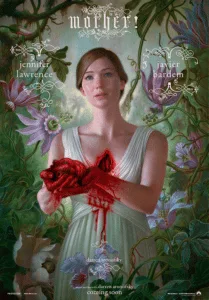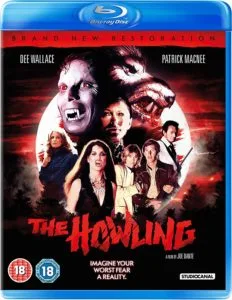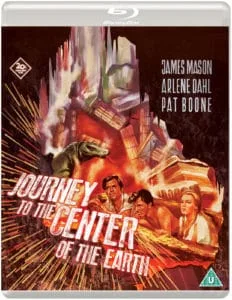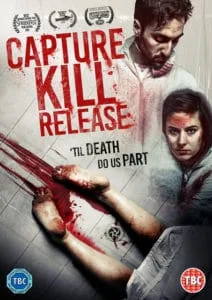Warped Perspective editors Keri O’Shea and Ben Bussey both went out to see Darren Aronofsky’s mother! in recent days, and given it’s a film custom designed to prompt debate they decided to chat it out – and, by contrast with many earlier discussion pieces of this nature, the two come to it from opposite points of view.
Be warned that this piece discusses mother! at length with heavy spoilers throughout. If you want a spoiler-free take on the film, see Ben’s review. Otherwise, read on…
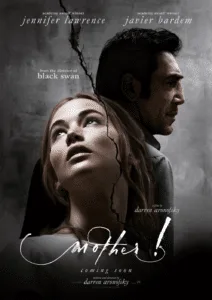
Ben: Guess so; I quite liked it, and I gather you really didn’t.
Keri: My first impressions, on looking around at reviews, people opining on Twitter etc. was that I was alone in my antipathy; further investigation seems to show that it’s a love or hate thing. There are, actually, a lot of people who felt like me. So I guess we represent both of those takes.
Ben: I suppose so, yeah. And it’s clear that is a film that’s going out of its way to polarise opinion.
Keri: I think I read Aronofsky stating that anyone who doesn’t feel some sort of emotional response at the end is lacking in feeling, or words to that extent. I did have an emotional response to mother! It’s just that by the end credits, that response was irritation.
Ben: That may be a slightly crass thing for a director to say; it’s not up to them how an audience reacts to their work. But I guess being profoundly pissed off is still an emotional response.
Keri: To be balanced here – I’m happy to talk about the film’s strengths. I acknowledge there are lots of them; Ed Harris and Michelle Pfieffer were great, Pfieffer especially; the film sounded good; it was ambitious.
Ben: Yes, I don’t think I gave enough credit to either of them in my review, they were both excellent.

Ben: Yes, it feels like the ultimate home invasion movie at first – attack of the seemingly innocuous friends and relations who rapidly come to outnumber you. I know I’ve hosted gatherings at which we, the homeowners, wound up feeling practically kicked out of our own home.
Keri: Yeah. I’ve had houseguests who texted their food demands ahead of arriving, but perhaps that’s not for here… Point is, many people would have been drawn into that domestic aspect of mother!
Ben: Which, I guess, is why the film starts out on that note, with material more people can relate to.
Keri: Which brings me to a question: did you immediately identify the religious allegory aspect which many people are glibly announcing was ‘totally obvious’? I have to say, it wasn’t what I first took from the film at all.
Ben: This would be the whole thing about how Jennifer Lawrence is Mother Earth, Javier Bardem is God, Ed Harris and Michelle Pfieffer are Adam and Eve, his writing room is the forbidden tree of knowledge and smashing the crystal is original sin. No, I didn’t pick up on that at first, but once the sons arrived and did their Cain and Abel routine I started to make that connection. Calling it obvious would be an overstatement; as with most things that are allegorical, a slew of possible readings present themselves.
Keri: I saw it all as a comment on the creative process – with her as a muse/embodiment of the creative ability, him as a creative type who just can’t keep himself away from the darker side of adulation – as embodied first by the invasive guests, and then later with the mob rule of the second act. So the pregnancy/baby motif is the culmination of the process, but it’s dragged apart by unthinking, base fans, so that he has to sacrifice one idea to begin on another. That’s how it grabbed me, anyway. All of this stuff about religion – it seems Aronofsky said something about ‘scripture’ when he introduced the first showing of the film. Which no doubt helped people to see it as ‘obvious’.

Keri: No I haven’t [seen Noah]. And I really can’t comment on Kabbalah; I’m not knowledgeable enough.
Ben: Neither am I, most of what I’ve garnered about it came from Pi. And, y’know, Madonna.
Keri: However, the whole real-not-real thing really alienates me as a viewer. This is one of the reasons I’m not a fan of allegorical cinema. Events are either unbelievable in order to accommodate the allegorical aspects, or else the allegorical aspects are rather tenuous because the story is still the most important thing. The second act in mother! – I mean, the whole realism of the first half got kicked into the weeds in favour of infanticide and people getting blown up. I also feel rather that saying “oh, it’s an allegory” is a get out of jail free card for some. How did you respond to Part 2: They’re Even Taking the Sinks?
Ben: I think from about the time when the wake turned into a raucous piss-up, I struggled to envisage where things were going, and I found that I rather enjoyed that. I also felt, from about that point on, it became more of a black comedy. It all becomes literally absurd, and I quite liked that. With the whole religious fanaticism angle, which I think becomes pretty clear by the final scenes, I found myself reminded of Life of Brian: the obsessive, utterly irrational behavior of the fanatics. But unlike Brian, smiling Javier seems to love it. Yet it’s disturbing at the same time; mother Jennifer being caught in an angry mob definitely ticked some of my boxes, as I have a real problem with crowds.

Ben: Yeah, I can appreciate that would be a huge problem; if you can’t empathise with the lead at all, virtually 2 hours of her in extreme close up isn’t going to be enjoyable. For myself, I’ve never really had strong feelings either way when it comes to Jennifer Lawrence. But I liked her performance. I could relate to her eagerness to please, her difficulty at speaking up. That said, I agree, I did wonder at various points why she didn’t just get the hell out of the house. But I suppose that’s part of the trickery, much as how when you first watch The Sixth Sense it doesn’t really register that Bruce Willis isn’t talking to anyone but the kid. So other than Jennifer Lawrence, was the main problem for you the contrast between, as you mention, the comparative naturalism of the first half by contrast with the theatrical abandon of the finale? Do you think it would have worked better had it been more clear that it was not the real world from the very beginning?
Keri: Possibly. As I say, the first half I think worked well; the allegorical elements (assuming it *was* to do with fame and creativity, not Mother Nature and God and such) could have come to the fore more organically, had this tone and pace continued. Coming back to Aronofsky, he’s also said something along the lines of ‘people might not get this film, but then people moan about boring cinema, so what do you want?’ and again, as much as I can see that he’s protective over his work and its reception, I think he has a bit of a nerve. Black Swan covered a lot of the same ground, far more effectively in my opinion. I feel that mother! was a cut-and-shut, two different films which didn’t come together, and the final act was unnecessarily disjointed and OTT, which unpicked all of the things which had come before. You can want innovative cinema without accepting anything weird which then comes along.
Ben: I see where you’re coming from, and under different circumstances I’ve no doubt I’d agree. The early scenes do feel like an entirely different film from the one we’re left with, even with the finale bringing things full circle perhaps a little too neatly. But in this instance, for whatever reason it worked for me. I enjoyed its weirdness. Still, it’s not like I’d make any claims for it being a masterpiece; I agree that Black Swan is the better film. In a weird way I’m almost more reminded of Tusk; I admire it for its audacity more than anything else, even if not everything entirely works. End of the day, I liked it, though I doubt I’ll have any great desire to see it again.
Keri: Well, it’s certainly a film which invites analysis – rather as we’ve been doing. In fact, it seems to ask for analysis before anything else. Clearly it’s dividing audiences, so if it does nothing else, then it’s certainly generating strong responses from people like us.
